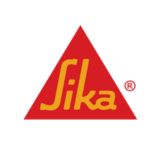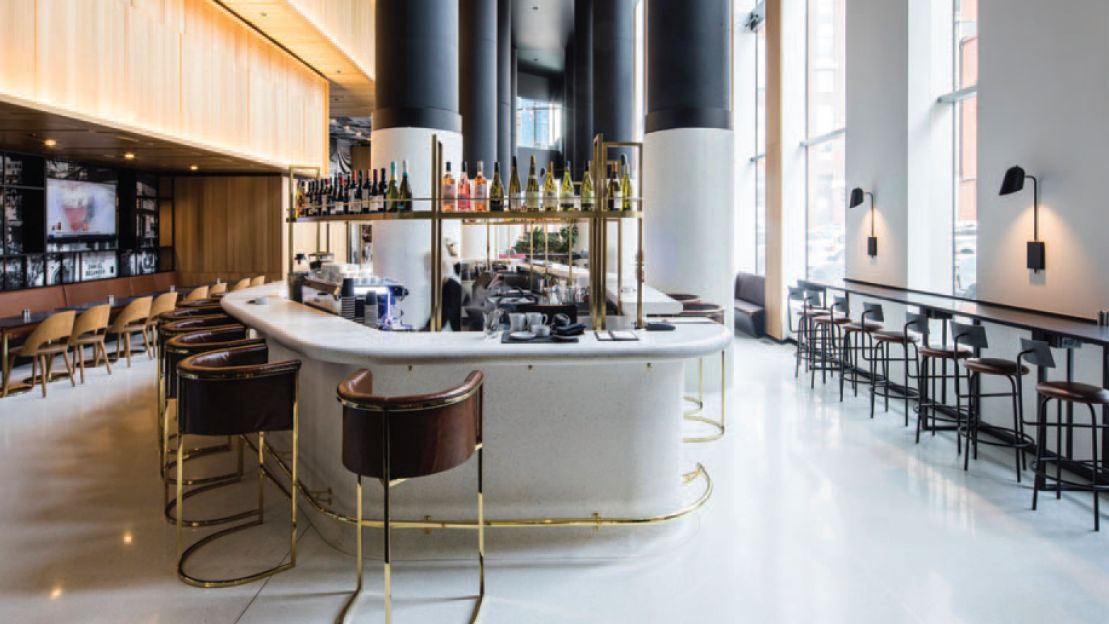13/01/2022
Origin of Terrazzo Floor System, types of Terrazzo, routine maintenance and two projects to be proud of: The reception pavilion of Quebec’s National Assembly and Hotel Monville’s lobby in Montreal.
The first terrazzo floor system was made in Venice, Italy, a few hundred
years ago. This system stood the test of time and is still in use today. Terrazzo, from Italian “Terrace” was created by Venetian workers who found a use for marble leftover of a variety of sizes coming from custom pieces cut. The workers creating the terrazzo flooring were considered as artists and were part of a small group called Mureri. It was only in 1579 that the supreme institution of the Venetian Republic recognized its validity and made it a real profession. During this year, the Mariegola dei Terrazeri was established and included a list of the qualified artists for terrazzo flooring installations. Considered as an art, terrazzo was installed in state-owned buildings, several palaces, residences for European kings and princesses and even at the Vatican. At the end of the 18th century, this art was introduced in North America thanks to the arrival of competent European immigrants.
Although today, terrazzo benefits from technological advances in installation techniques and a wide variety of aggregates, its natural beauty and durability are still just as important. It is used in many types of projects, from small spaces to create an impact, to large-scale projects. With recent technologies, a large colour choice and aggregate variety, terrazzo flooring lends itself more than ever to a wide variety of application, of all types of style.
Types of Terrazzo
While the general appearance of terrazzo seems the same, systems can differ further than visible details. There are many types of terrazzo systems, first, they can be categorized by the type of binder used to hold aggregates together, including cement, acrylic (polyacrylate), or epoxy resin. In the cement category, there are multiple systems which thickness can vary from 12 to 75 mm, they are defined according to the type of underlayment.
Then there are binding compounds that are epoxy or acrylic based resins. These have allowed the development of a thinner terrazzo matrix system, with a thickness ranging from 6 to 10 mm. These systems are lighter, easier, and faster to install. Because of their thinner profile, these systems are perfect for renovation or restoration projects. In new construction, other flooring systems, like ceramic tiles or carpet can easily be installed next to terrazzo without having to reduce the thickness of the concrete accordingly. Advances in polymer resin technology have made these systems solvent free and virtually odourless, making them more attractive and user-friendly than in the past.
Each system offers its own benefits and performance characteristics according to the requirements of the different construction methods. Systems can be loose (non-adhered), adhered, adhered with an epoxy resin, semi-Venetian, Venetian, and rustic. Terrazzo has always been known for its durability and its great beauty. It as always been used as a flooring system in commercial buildings, hospitals, office buildings, churches, and airports. It was considered as a first-class flooring material in the commercial construction industry from 1950 until the 60s. Independent studies have shown that the sum of the initial cost, the replacement and maintenance cost over a 10-year period makes terrazzo a less expensive flooring than most of the flooring systems. When the same criteria are observed over a 40-year period, terrazzo is, again, significantly less expensive than most of the floor covering materials.
What about in Quebec?
You must know that there are only a few companies that work with terrazzo. One of them, Carrelages de Montréal ltée, has been installing, among other things, terrazzo floors for over 40 years. I wanted to know a little more about this company during a meeting with Benoit Giroux, president, and André Giguère, project director. “At first, projects consisted of cementitious terrazzo works in schools, hospitals, and shopping centres, now epoxy terrazzo, first introduced about 20 years ago, consists of about 80 % of our terrazzo project bids,” said the president.
According to them, what distinguishes one from the other is that cementitious terrazzo is still considered as a fine material. It can be found in museums (even at Quebec City parliament). However, slabs must be contained within a maximum spacing of 1,5 m, epoxy terrazzo allows for a larger spacing. Epoxy terrazzo is the most popular because of the number of colours available, as the epoxy matrix allows for a virtually unlimited choice of colours.
It should also be known that cementitious terrazzo requires the application of a mortar screed, the installation of a metal transition profile, then the cementitious matrix is poured at a 19 mm minimum thickness (16 mm once polished). Epoxy terrazzo requires support preparation (usually through the application of an underlayment of self-levelling screed) when flatness is outside the required tolerances. The mixing time is a little bit faster for epoxy since the application thickness is lower (about 6 to 9 mm). The polishing steps and equipment needed are similar.
For vertical installation (i.e., baseboards) cementitious terrazzo is more suited for an on-site execution, because the consistency can be adjusted. It must be noted that for the past few years, it is common to prefabricate these elements in a workshop and install them on-site. Once all the polishing steps are completed, the floor as well as the vertical elements can be perfectly integrated together.
As all surfaces, terrazzo requires a routine maintenance. Every two year, the surface of cementitious terrazzo must be deeply refreshed. It needs to be striped, sealed and receive a coat of wax. As for epoxy terrazzo, once it is protected with appropriate products it only requires a routine maintenance.
Pierre Hébert, PA LEED AP BD+C _ CTR-CSC / RTC-DCC
Application Field Manager, SIKA Canada
This text was written by Pierre Hébert.
Note: Portions of this article are taken from the TTMAC (Canadian
Terrazzo, Tile and Marble Association) Terrazzo Guide 09 66 00 available at www.ttmac.com/en
The reception pavilion of Quebec’s National Assembly
I asked them what project they were the proudest of. Without any hesitation, they both mentioned the project of the reception pavilion of Quebec’s National Assembly. For this project, the cementitious terrazzo was chosen for its richness, just like the fact that there was terrazzo in the project. The pavilion is where visitors meet before the guided tour of the parliament. The architect leading the project wanted to create an exceptional experience.
The terrazzo work lasted a year and required at least eight workers! The complexity of the work, as the photos show, was in the countless details. For example, the work consisted of, among other things, 23 different sections (with widths ranging from 75 cm to 0). We can all agree that it is quite a success!
Without any surprise, Benoit told me that what he and his team are looking for projects with technological challenges. According to him, what makes Carrelages de Montreal stand out is that the office staff as well as the on-site workers are highly qualified and passionate people that completely adhere to the company values, which are quality and service
Since its debut in the antiquity, terrazzo has been and is still considered as a wise choice for contemporary flooring for modern buildings. For the past few years, the new colours, the natural aggregates, the glass aggregates as well as the addition of metal particles or other materials contributed to the appearance of terrazzo. Compounding improvements continue to drive terrazzo popularity as a quality flooring system for commercial areas exposed to heavy traffic and allow for attractive effects in most installations.
Hotel Monville’s lobby in Montreal: Another project to be proud of!
Sumptuous column enhanced with epoxy terrazzo manufactured in the workshop and assembled and installed on-site.
Then there is the hotel bar. This unique piece, also made in terrazzo, offers an elegant view to the guests. It goes without saying that the solutions developed for its manufacture are a well-kept secret.
Achieve style, elegance, and design
Floors. Columns. Architectural elements… Discover the unique potential of Sikafloor® Terrazzo – Pigmented epoxy resins for Terrazzo thin coat systems

